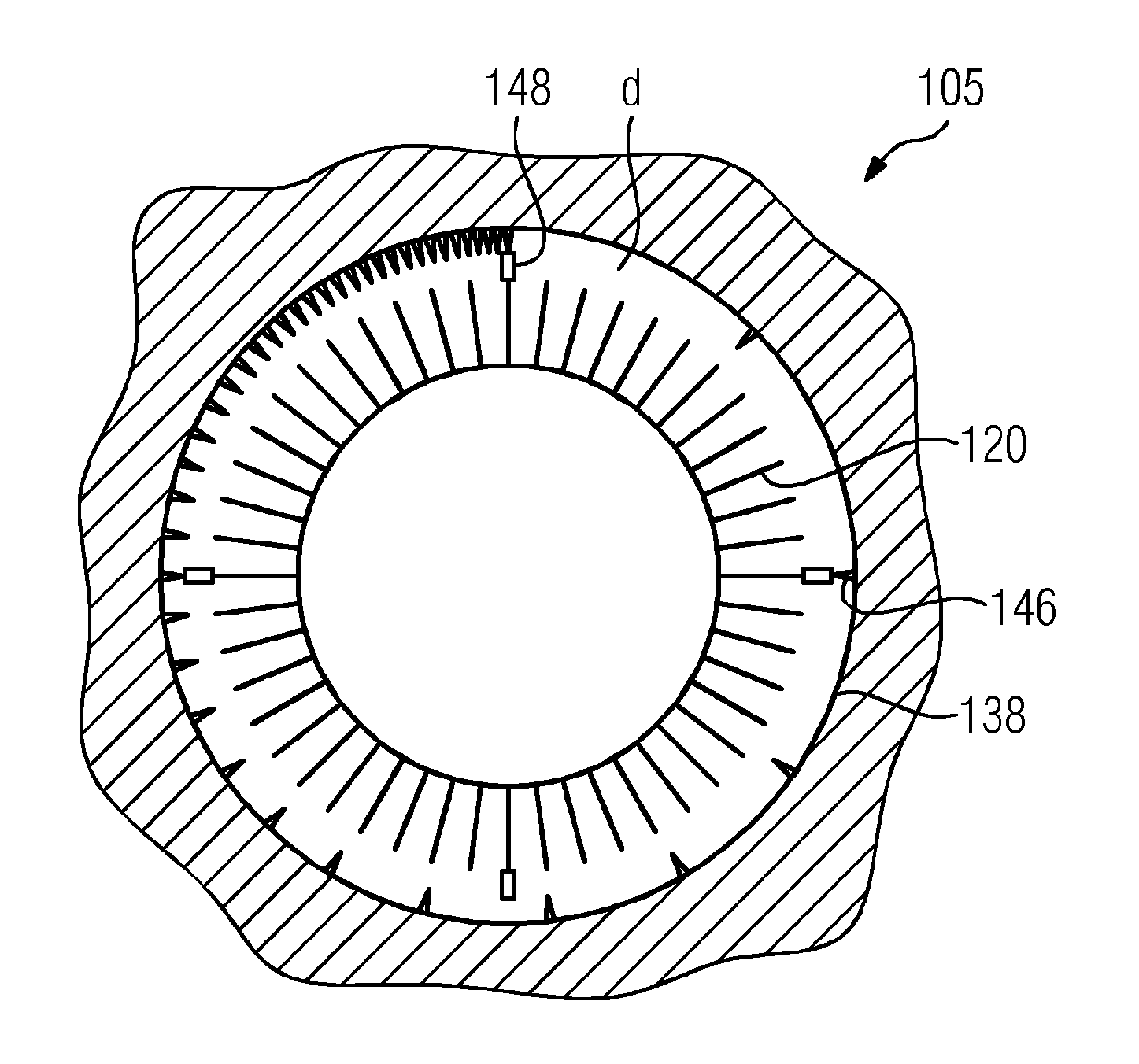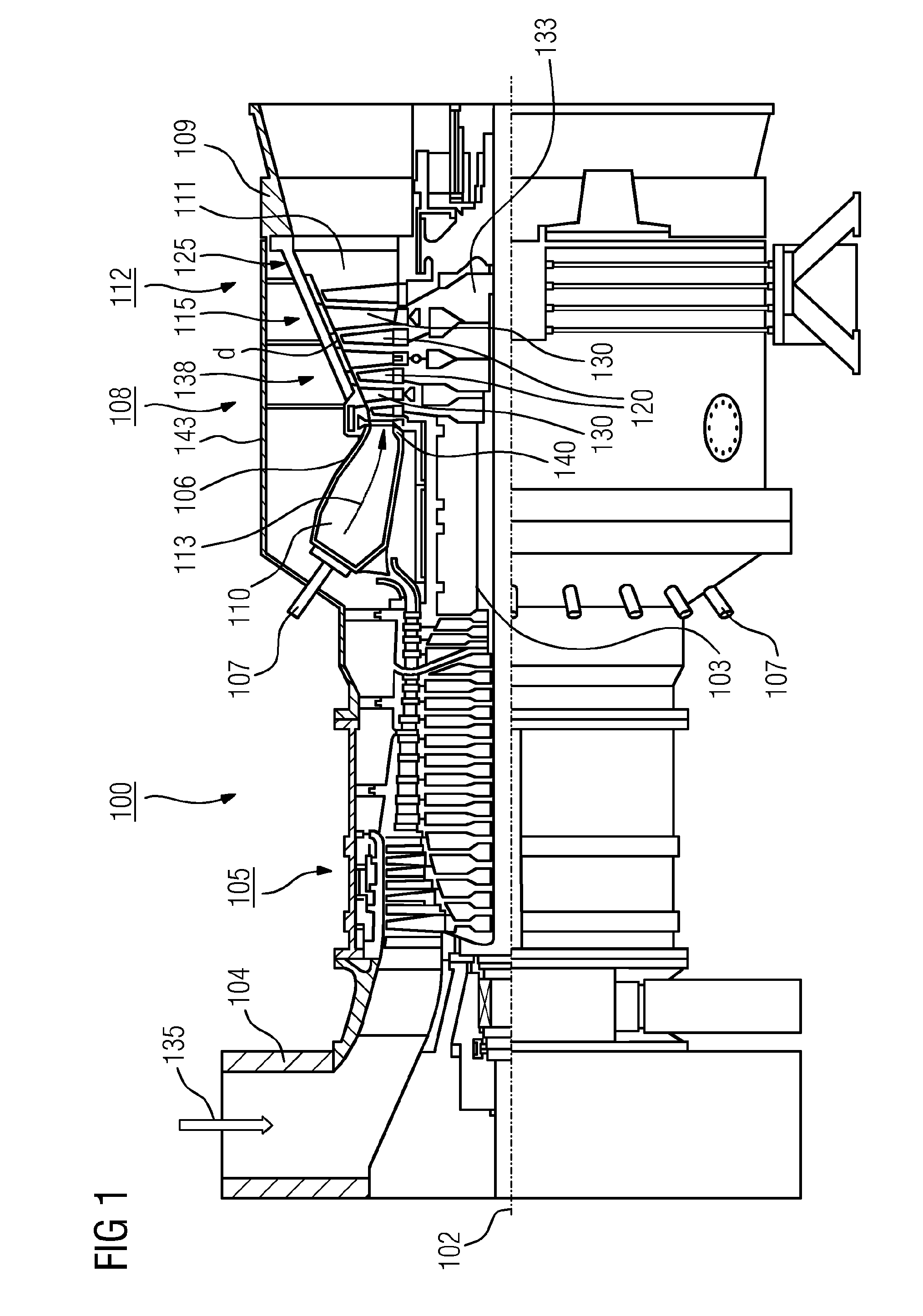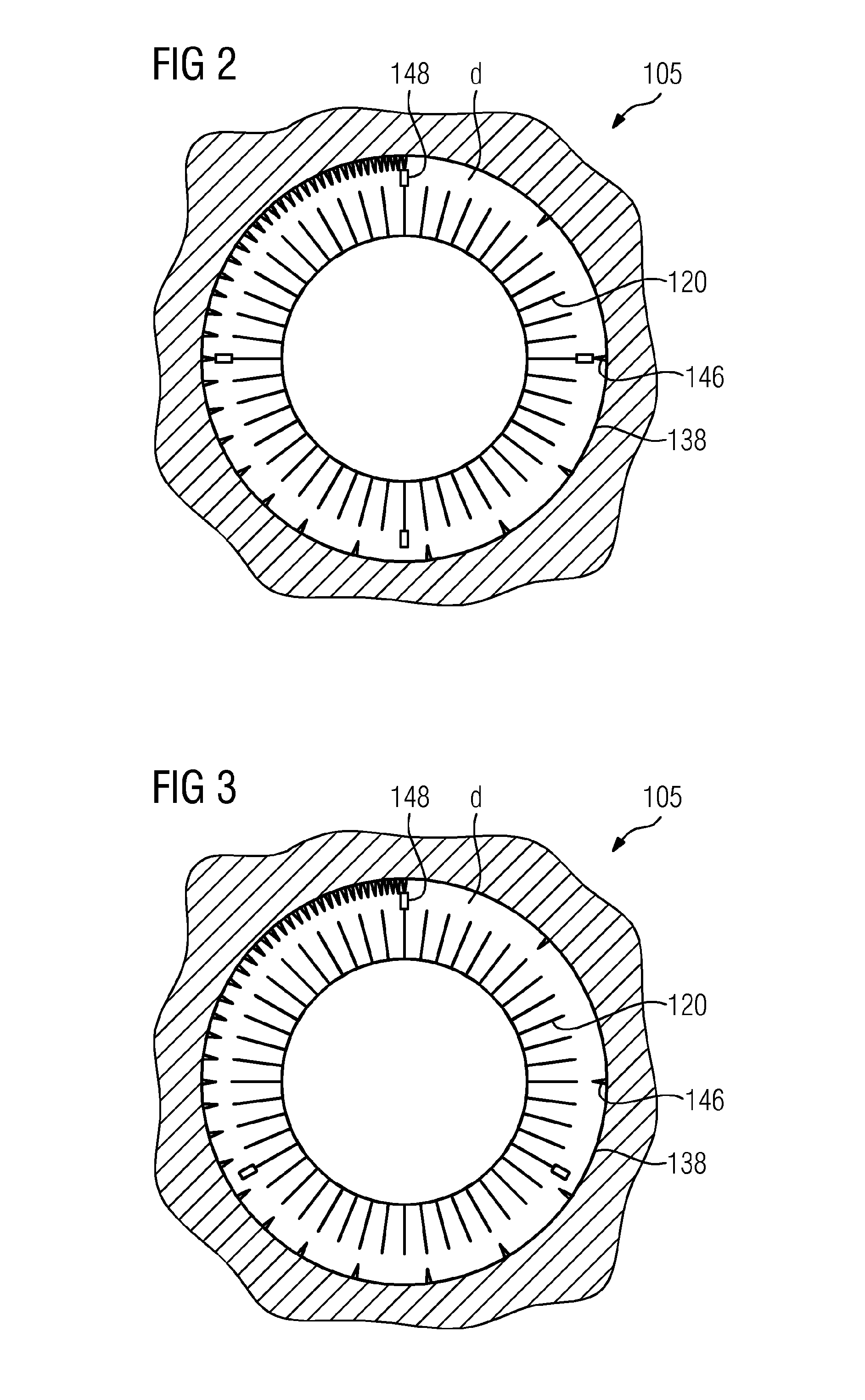Turbine and method for detecting rubbing
a technology of turbines and rotors, applied in the field of turbines, can solve the problems of only allowing basic detection of rubbing, and achieve the effects of optimizing the minimization of the gap between the rotors, increasing output, and optimizing the efficiency of the turbin
- Summary
- Abstract
- Description
- Claims
- Application Information
AI Technical Summary
Benefits of technology
Problems solved by technology
Method used
Image
Examples
Embodiment Construction
[0025]The same parts are provided with the same designations in all the figures.
[0026]FIG. 1 shows a turbine 100, here a gas turbine, in a partial longitudinal section. The gas turbine 100 has in the interior a rotor 103, which is also designated a turbine rotor, mounted such that it can rotate about an axis of rotation 102 (axial direction). Along the rotor 103, an intake housing 104, a compressor 105, a toroidal combustion chamber 110, in particular an annular combustion chamber 106, having a plurality of burners 107 arranged coaxially, a turbine 108 and the exhaust gas housing 109 follow one another.
[0027]The annular combustion chamber 106 communicates with an annular hot gas channel 111. There, for example, four turbine stages 112 connected one behind another form the turbine 108. Each turbine stage 112 is formed from two rings of blades. As seen in the flow direction of a working medium 113, a row 125 formed from rotor blades 120 follows in the hot gas channel 111 of a row 115 ...
PUM
 Login to View More
Login to View More Abstract
Description
Claims
Application Information
 Login to View More
Login to View More - R&D
- Intellectual Property
- Life Sciences
- Materials
- Tech Scout
- Unparalleled Data Quality
- Higher Quality Content
- 60% Fewer Hallucinations
Browse by: Latest US Patents, China's latest patents, Technical Efficacy Thesaurus, Application Domain, Technology Topic, Popular Technical Reports.
© 2025 PatSnap. All rights reserved.Legal|Privacy policy|Modern Slavery Act Transparency Statement|Sitemap|About US| Contact US: help@patsnap.com



